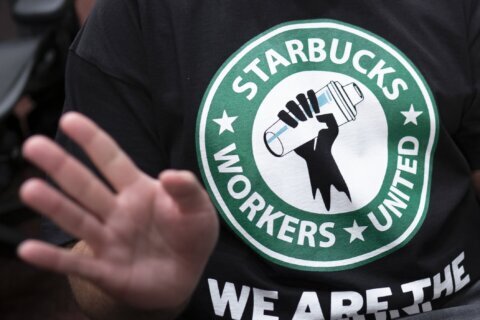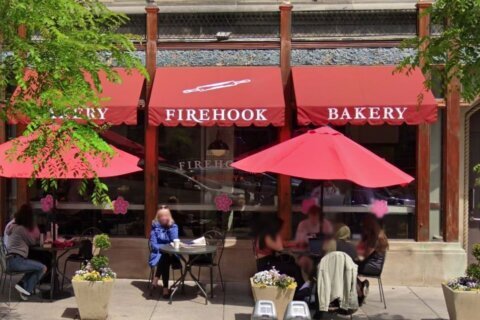
Americans are no longer protected from evictions or receiving beefed-up unemployment payments, but they are still benefiting from many other federal coronavirus rescue measures.
More support may be on the way, as Democrats on Capitol Hill hammer out a 10-year, $3.5 trillion budget reconciliation bill that would greatly expand the nation’s safety net programs.
Yet passage of that legislation isn’t guaranteed, and while the economy is in better shape than it was earlier in the pandemic, many families are still struggling to get back on their feet.
These relief measures remain in effect.
Enhanced child tax credits
Tens of millions of American families will receive four more monthly child tax credit payments as part of Congress’ enhancement to the program for 2021.
The next installment — up to $300 for each child up to age 6 and $250 for each one age 6 through 17 — will be sent next week.
Eligible families will receive a total of up to $3,600 for each child under 6 and up to $3,000 for each one age 6 to 17 for 2021. That’s an increase from the regular child tax credit of up to $2,000 for each kid up to age 17.
Parents will receive half their credit this year and can claim the other half when they file their 2021 taxes next year.
The full enhanced credit is available for heads of households earning $112,500 and joint filers making up to $150,000 a year, after which it begins to phase out. For many families, the credit then plateaus at $2,000 per child and starts to phase out for single parents earning more than $200,000 or for married couples with incomes above $400,000.
More low-income parents are eligible for the child tax credit this year because the Democrats’ March relief package made it fully refundable. It had been only partially refundable — leaving more than 26 million children unable to get the full credit because their families’ incomes were too low, according to Treasury Department estimates.
The Internal Revenue Service sent more than $15 billion to the parents of roughly 61 million children in August. The first payments went out in July.
The enhanced credit, which is expected to cut child poverty nearly in half this year, is only available for 2021, however. Lawmakers are hoping to extend the boost for several more years as part of the reconciliation bill.
Rental assistance
Although the federal eviction moratorium expired in August, roughly 90% of the $46 billion in federal emergency rent relief money was still available as of last month.
The funds, which started flowing in January, have been slow to reach those in need. Typically, renters must apply for the money — but the process varies by state, many of which had to build new administrative systems to distribute the money. Sometimes landlords need to submit applications first.
Eligibility is based on a household’s financial situation and housing needs. The money can be used to cover rent, utilities, late fees and moving expenses.
Student loan deferral
Payments on federal student loans have not been required since March 2020. Repayment is set to resume in February, after an unprecedented 23-month freeze.
During this time, borrowers’ balances have effectively been frozen because interest has also stopped adding up — saving the average borrower about $2,000 over the first year — and collections on defaulted debt have been on hold.
The relief is even more significant for those who work in the public sector and may be eligible for loan forgiveness after 10 years. They are still receiving credit toward those 10 years of required payments as if they had continued to make them during the pandemic, as long as they are still working full time for qualifying employers.
The freeze on payments has been extended several times by both the Trump and Biden administrations, but the Department of Education said that the latest extension — which pushed the repayment start date from October to February — would be the last.
Additional nutrition assistance
Food stamp recipients will continue to receive a 15% increase in monthly benefits through the end of the month, as part of the Democrats’ March relief bill.
Starting in October, monthly food stamp benefits will jump 27% above pre-pandemic levels, on average — the largest increase in the program’s history. Under the revision, which is permanent, beneficiaries will see a $36 hike in average monthly benefits.
The boost stems from the US Department of Agriculture’s update to the Thrifty Food Plan, which determines the benefit amounts of the Supplemental Nutrition Assistance Program, or SNAP, the formal name for food stamps. The update is part of a USDA review of the food stamp program required under the 2018 Farm Bill.
Most food stamp enrollees are also receiving an emergency allotment that lawmakers approved at the start of the outbreak last year, though a handful of states have dropped out of the program.
States can also apply for the Pandemic-EBT program for the 2021-22 school year to replace meals lost by children because their schools and child care facilities are closed or have restricted their in-person schedules due to the coronavirus. Congress created the program in the spring of 2020 to help alleviate hunger among children.
Beefed-up Affordable Care Act subsidies
Lawmakers enhanced Affordable Care Act subsidies for 2021 and 2022, seeking to address the main complaint about the law — that policies are not affordable, especially for the middle class.
Enrollees now pay no more than 8.5% of their income toward coverage, down from nearly 10%. And lower-income policyholders can receive subsidies that eliminate their premiums completely, as can out-of-work Americans who received unemployment benefits this year, depending on the plan they pick.
Also, those earning more than 400% of the federal poverty level — about $51,000 for an individual and $104,800 for a family of four in 2021 — are eligible for help for the first time.
While the special enrollment period for the uninsured has closed, those who have lost work-based coverage or had major life changes, such as marriage or divorce, can sign up for policies. And the open enrollment period for 2022 coverage starts on November 1.
Money for schools
Together, the three major pandemic relief packages passed by Congress authorized more than $190 billion to help America’s schools reopen and stay open during the pandemic. A lot of the funds were used to buy PPE, upgrade ventilation and boost summer school programs, but there are still billions of dollars left to be spent.
It’s up to local school boards to decide how to use a majority of the money, though 20% must be used to address learning loss. It’s a huge federal investment, equal to roughly six times the amount of fiscal year 2021 base funding, and Congress gave schools more than three years to spend the latest and biggest round. It’s unlikely to be spent all at once, especially if it’s used for teachers’ salaries or capital improvements that are paid for over time.
These programs have ended
Pandemic unemployment benefits. Congress’ historic expansion of the unemployment benefits system expired nationwide last weekend.
Laid-off Americans are no longer receiving the $300 boost to their weekly benefits. Also finished are the two programs that provided payments to freelancers, independent contractors, the self-employed, certain people affected by the coronavirus and those who exhausted their state benefits.
More than 8 million people are now left with no unemployment compensation at all, while another 2.7 million lost the $300 federal supplement but will continue receiving state payments, according to estimates by The Century Foundation.
Two dozen states opted to terminate one or more of the programs in June and July, affecting 2.7 million jobless residents. The governors — all but one of them Republicans — wanted to push their residents to look for jobs.
But experts warned that employment is not expected to suddenly surge.
Eviction protections. A federal eviction moratorium expired in August after the Supreme Court blocked the latest attempt by the Biden administration to extend it.
Eviction filings are expected to ramp up, but it is yet to be seen how backlogged courts are and how effective the remaining patchwork of state and local protections will be in keeping renters in place until they secure rent relief. Some state and local jurisdictions have been enacting their own eviction bans to protect renters while the process of distributing rental assistance continues.
The federal moratorium — which frustrated landlords — was first put in place last September by the Centers for Disease Control and Prevention to prevent the spread of the coronavirus and expired at the end of July.
But pressure from housing advocates, who argued against ending the ban before the bulk of the federal rental assistance money was distributed, pushed the Biden administration to issue a new ban covering areas where Covid infection rates are elevated, protecting about 90% of renters. That was blocked by the Supreme Court within weeks.
Small business aid. Three major federal aid programs for small businesses are no longer accepting new applications.
The Paycheck Protection Program, which provided more than $798 billion in forgivable loans to 8.5 million small businesses and nonprofits, ran out of money in May.
A program that awarded grants specifically to restaurants used up its entire $28.6 billion pot in July, just two months after it opened. It sent money to more than 100,000 restaurants but fell well short of meeting the demand. The program had received at last 278,000 applications totaling more than $72 billion in requested funds.
The Shuttered Venue Operating Grant program has also stopped taking new applications. As of this week, it had provided 11,774 grants worth $9.5 billion to theaters, music venues and museums. Those that received grants may still be eligible to apply for supplemental funding.
Struggling small businesses can also still apply for loans from the Small Business Administration’s Economic Injury Disaster Loan program.








